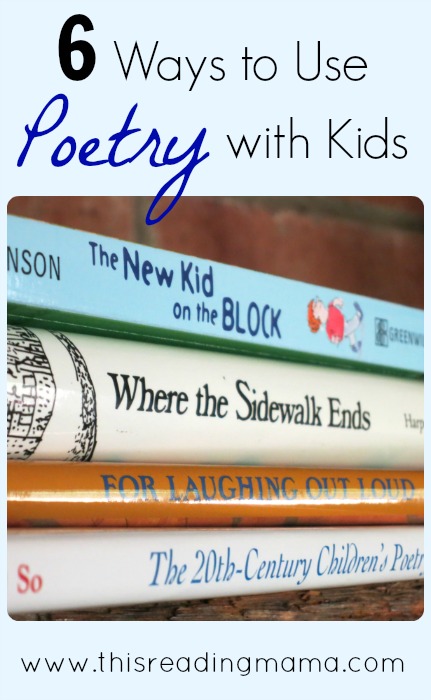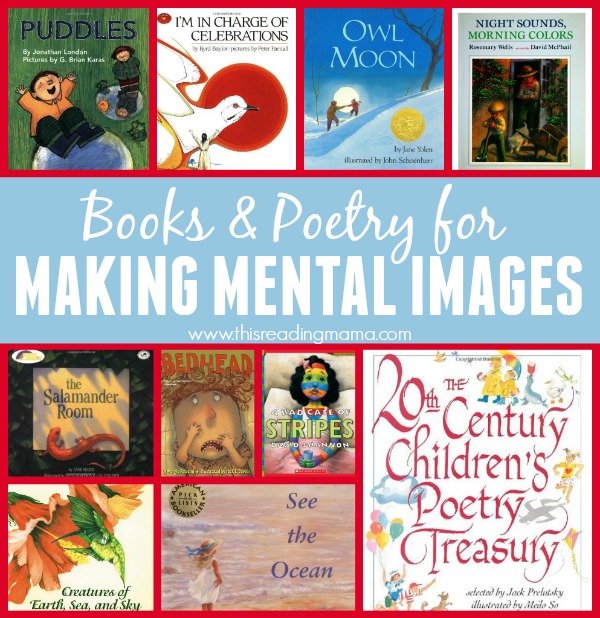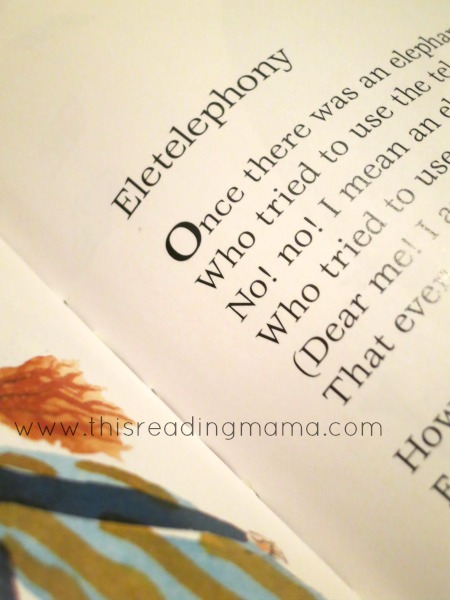
Did you know that April is National Poetry Month? What a fun thing to celebrate (not just in April, but all year)! Poetry is one of my favorite teaching tools for all readers, but especially reluctant and struggling readers. There are SO many ways to use poetry with kids, but I want to highlight just six.
*This post contains affiliate links.
6 Ways to Use Poetry With Kids
1. Work on Fluency
Poetry is the perfect candidate for working on fluency for three main reasons: (1) the text is shorter, (2) the text is typically filled with all kinds of punctuation, providing great lessons on using punctuation to read with fluency, (3) it’s just fun to re-read!
2. Make Mental Images
Many poems paint vivid pictures, perfect for helping readers make mental images in their head (an important comprehension skill). As we read poetry, we will often draw pictures of what we see, comparing our drawings and finding the words from the poem that help us see that picture.
3. Make Inferences
Along with making mental images, poetry often describes things without telling exactly what it is. The 20th Century Children’s Poetry is full of poems that do just this.
While the title will many times give it away, I like to hide the title by placing a Post-It Note to cover the title. We read the poem together and then I help the young reader infer what the poem could be referring to. Then, I ask the reader to name the poem.
We also have a free printable pack for making mental images with poetry and list of books and poetry for making mental images.
4. Play with Words
Poets have a way with words and kids love it! For younger children, the rhyming words are so good for kids to hear as rhyming is a needed skill for early readers. But there are other ways that poets play with words, like:
- Onomatopoeias– words that imitate a sound
- Alliteration and Consonance- playing with a repetition of consonant sounds in words, like you hear in many tongue twisters
- Repetition of phrases or words
- Expressions- poetry can be filled with cliches and other expressions that bring the text to life
- Imagery- words that appeal to the five senses such as similes, metaphors and personification
- Psuedo words- poets make up words to make it rhyme or to play on words (such as Eletelephony by Laura E. Richards from For Laughing Out Loud).
5. As a Springboard for their Own Writing
Kids can use the same topic or poem structure (free verse, haiku, etc.) to write a new poem of their own. The rules to writing poetry can be very structured or completely free, which makes writing poetry appeal to a wide range of writers. What Do We Do All Day? has a great post on writing poetry with kids.
6. Build Reading Motivation
While some poetry can be more on the serious side, other poetry can just be fun to read. Jack Prelutsky and Shel Silverstein have been some of our favorites over the years. My second grade son, a reluctant reader, looks forward to Monday because we read silly poetry together. I have been amazed at the way that reading these funny poems has stretched his vocabulary, sense of humor, and motivation to read!
More Poetry Resources You May Enjoy:
Follow This Reading Mama’s board Poetry on Pinterest.
Stay connected so you don’t miss a thing:
- Subscribe by email {get really cool FREEBIES when you do!}
- Google+
~Becky



This is fantastic! Thanks for sharing. I have shared your link on my Facebook page. 🙂
A really great overview full of ideas! Thanks for sharing!
Great ideas. We read a lot of ppetry, unfortunately, my daughter is on “poetry is boring” train at the moment…
Poetry is such a wonderful avenue for teaching so many learning skills. Great post!